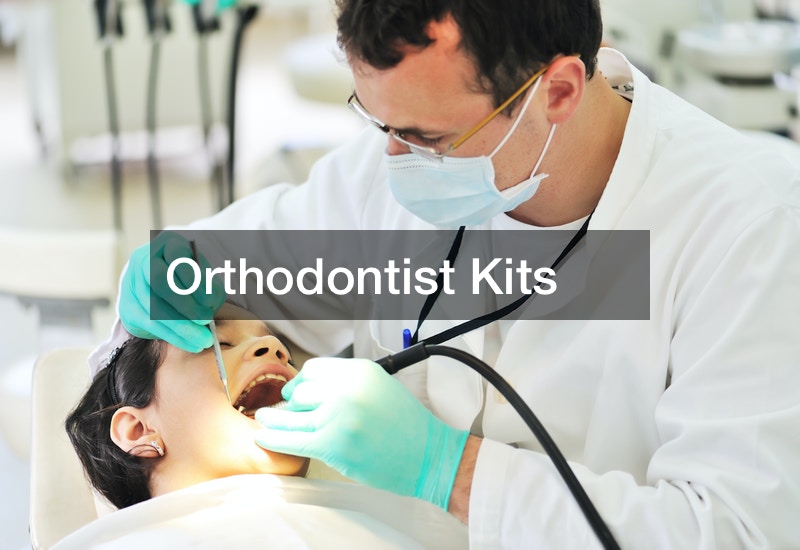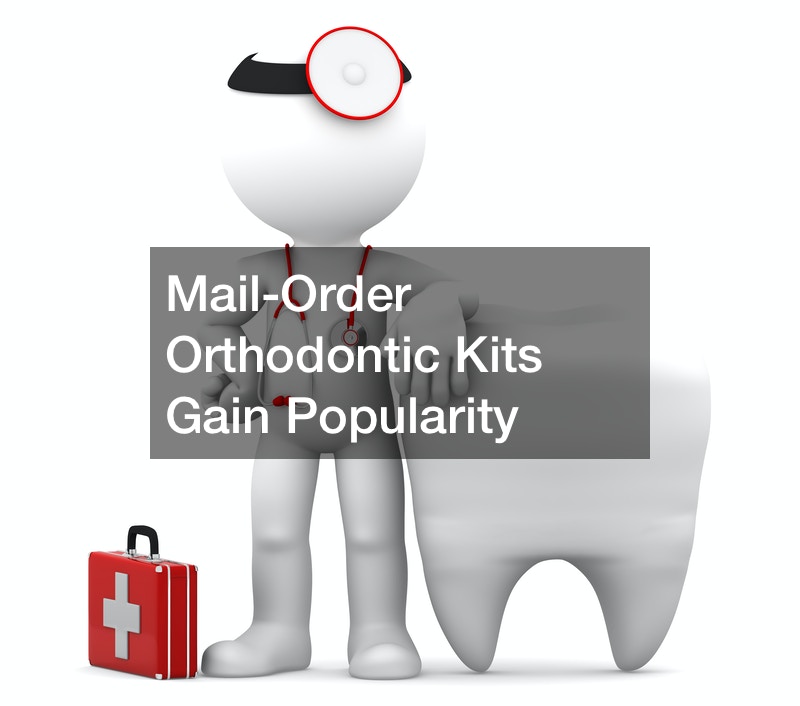An Orthodontist in Your Mailbox: Mail-Order Orthodontic Kits Gain Popularity


When you have teeth that aren’t straight, and you aren’t happy with them, you may need to get braces today. Seeing an orthodontist can help you to find out what can be done for your teeth with orthodontics. Are orthodontist doctors? Are orthodontists medical doctors? They are dentists who have extra training in orthodontics, but they aren’t medical doctors. Are orthodontists in high demand? Yes, many people seek them out for straighter teeth.
Are retainers considered orthodontic treatments? Yes, they are. They are often used after the braces come off the teeth in order to keep the teeth well-aligned. In some cases, a retainer may be used before braces are put on the teeth. Retainers are an important part of orthodontics. Many people wear their retainers regularly for life after they have had their braces taken off. This reinforces the work that the braces did.
Braces can help with a wide range of dental problems from crooked teeth to crossbites to overbites. Often, it’s the dentist who notices that you may need to see an orthodontist. They will generally refer you to a local orthodontist for evaluation and treatment. After wearing braces, you can be much happier with the way your smile looks.

If you are considering orthodontic treatment, you probably have a lot of questions: what is an orthodontist doctor? What can they do for me? How much will it cost? This overview will help answer some of those questions.
What is Orthodontics?
Orthodontics is the branch of dentistry specializing in diagnosing, preventing, and treating dental and facial irregularities. Adult braces treatment is one of the common orthodontic procedures. Other types of treatment include:
• Crowded teeth
• Gaps between teeth
• Misaligned teeth
• Bad bites (open bite, crossbite, overbite)
• Jaw misalignment
The American Association of orthodontists membership directory can help you find a qualified orthodontist in your area.
Why see an Orthodontist?
The most common reason to see an orthodontist is for braces, which are devices used to align and straighten teeth. If you are not comfortable with your orthodontist, the American Association of orthodontists transfer form is necessary when you want to transfer from one orthodontist to another. There are many different braces, but they all work by applying gentle pressure to the teeth over time. This pressure gradually moves the teeth into the correct position.
When you wish your teeth were straighter, there are ways that you can get them into better positions. Many people get an orthodontist for kids to see their children and install braces. An orthodontist creates a treatment plan to straighten a patient’s teeth and then implements every stage of that plan. If you need to find a braces office near you, it’s a good idea to ask around for a recommendation. If your child is in school, asking other parents can be helpful in finding a good orthodontist.
Some of the most common orthodontic procedures are to install traditional braces as well as administer a clear aligner system for tooth straightening. Dentist office braces work by incrementally moving the teeth slowly over the period of the treatment plan.
Clear aligner trays work in the same way, being changed out for new trays instead of being tightened like braces. Both methods keep gentle pressure on the teeth as they move into better positions. Wearing clear trays often takes less time than wearing braces, and it generally costs less. That has made this method very popular among people of all ages. However, some patients do still have to wear braces for straightening.
An orthodontist is a great resource for information about dental care and oral hygiene in general. Whether you need help with the basics of dental care or are in need of more advanced care and treatments, then an orthodontist can be just who you need to contact.
Many people have questions about this branch of dental care. Questions such as braces orthodontics and can an orthodontist do surgery to remove wisdom teeth are very common. Answers to these and other common and important questions can be answered by calling or visiting your local dental care expert. There are also websites inline that help connect orthodontics providers to locals who need advanced dental care treatments.
When you need advanced dental care or treatment for things including gum cleanings, and gingivitis treatments, full orthodontic treatment options become more important than ever. Make sure you are taking the best possible care of your teeth and gums day in and day out. And find your local orthodontist and see what they can to do help as well! You will be glad that you did!
Seeing an orthodontist for braces is most commonly thought of as dental treatment for children and young teens — indeed, the average age among orthodontics patients is 10 years old.
However, a lot of people reach adulthood without ever getting the teeth braces they need. Many of these adults, looking to improve the appearance and health of their teeth, look into the various types of orthodontics for adults.
One of these forms of adult orthodontics that has recently emerged — and is quickly gaining in popularity — is the mail-order invisible aligning kit.
According to the New York Times, ordering these kits online saves the hassle of visiting an orthodontist every few weeks for new aligning trays, and this method cuts about half the cost of getting invisible braces from an orthodontist’s office. When the average cost of invisible aligners from an orthodontist ranges anywhere from $4,000 to $6,000, this translates to massive cost savings.

It’s relatively easy for an individual to use these kits on his or her own. The patient mixes up the putty provided in the kit, puts the putty in two trays, then takes a mold of his or her teeth. These teeth molds are then sent back to the remote-aligner company, where custom aligning trays are manufactured and mailed to the patient’s home.
“It shouldn’t have to cost a small fortune to straighten your teeth,” Doug Hudson, one of the founders of SmileCareClub, a company offering these at-home orthodontics for adults, said.
Critics of at-home tooth-aligning kits say invisible aligners aren’t for everyone, and using them without an orthodontist’s supervision could compromise the success of the treatment, according to the New York Times. The Food and Drug Administration now considers these aligners to be prescription devices, and the American Association of Orthodontists advises that these at-home aligning kits only be used after a consultation with a professional orthodontist.
Despite this method’s potential risks, more and more people across the country are flocking to this convenient and cheap form of orthodontics for adults.
What do you think about these at-home kits? Are they a great value, or could they be harmful to one’s dental health? Share your thoughts with us in the comments below. More on this.



